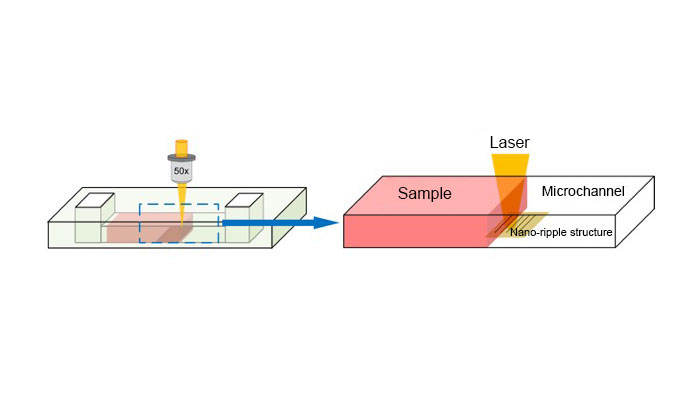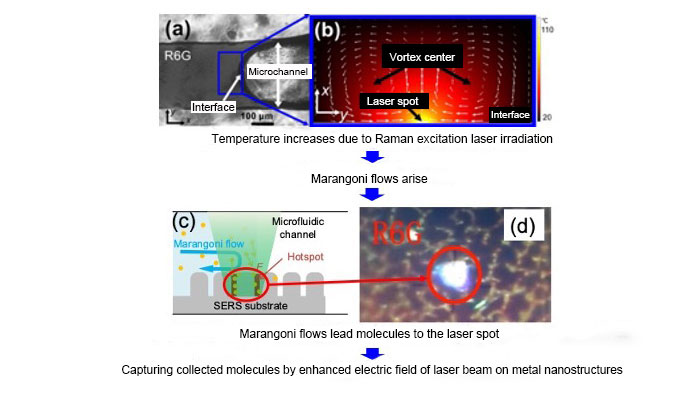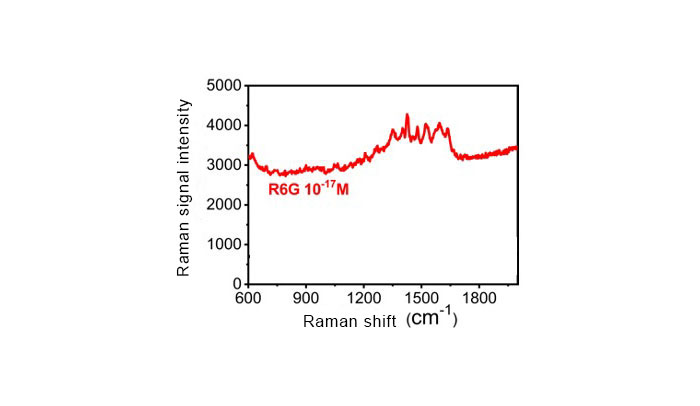Oct. 25, 2022
New Surface-enhanced Raman scattering (SERS) analysis method enables ultra-sensitive analysis - Liquid interface-assisted SERS (LI-SERS) -
RIKEN No.: 09143
Inventors
Koji Sugioka- Advanced Laser Processing Research Team, Shi Bai- Advanced Laser Processing Research Team
Background
SERS is a widely used method for analyzing trace amounts of substances with high sensitivity. It can detect substances at nanomolar (nM/10-9 molar) concentration levels. Although new methods for detecting extremely small femtomolar (fM/10-15 molar) concentrations of substances have been proposed, they have several drawbacks, such as complicated equipment/measurement methods and only transient achievement of high detection sensitivity.
Summary
In LI-SERS, SERS analysis is performed at an air-liquid interface formed on the SERS substrate. Using this method, detection of ultra-low trace substances below 10 aM (10-17M) can be achieved. In addition to this, highly-sensitive analysis will be possible on large biomolecules such as DNA and β-amyloid, the defining biomarker of Alzheimer’s Disease.

Figure 1: Schematic diagram of the implementation for LI-SERS

Figure 2: Mechanism of ultra-sensitive analysis using LI-SERS

Figure 3: Attomolar level sensing by LI-SERS (sample is Rhodamine 6G)
Merits
- Substance-detection sensitivity with the new analysis method (attomolar level, aM, or 10-18M) is so good it cannot be compared with traditional methods.
- No special equipment is required for detection, and use of traditional Raman spectroscopy is possible (enables simplified analysis).
- Because the highly sensitive SERS analysis is implemented on the substrate itself, even better detection sensitivity can be achieved in the future.
Applications
- Detection of ultra-low trace substances (application for academics; environmental analysis such as detection of contamination; inspection for food safety; etc.)
- Early diagnoses of diseases such as Alzheimer's Disease
- Prompt and highly-sensitive analysis for viruses and bacteria
References
- 1. Application Number: PCT/JP2021/021620
- 2. S. Bai, D. Serien, Y. Ma, K. Obata, and K. Sugioka, “Attomolar Sensing Based on Liquid-Interface Assisted Surface Enhanced Raman Scattering in Microfluidic Chip by Femtosecond Laser Processing”, ACS Appl. Mater. Interfaces, 12, 42328–4233 (2020).
- 3. S. Bai, X. Ren, K. Obata, Y. Ito, and K. Sugioka, “Label-free trace detection of bio-molecules by liquid-interface assisted surface-enhanced Raman scattering using a microfluidic chip”, Opto-Electron. Adv. (in press)
